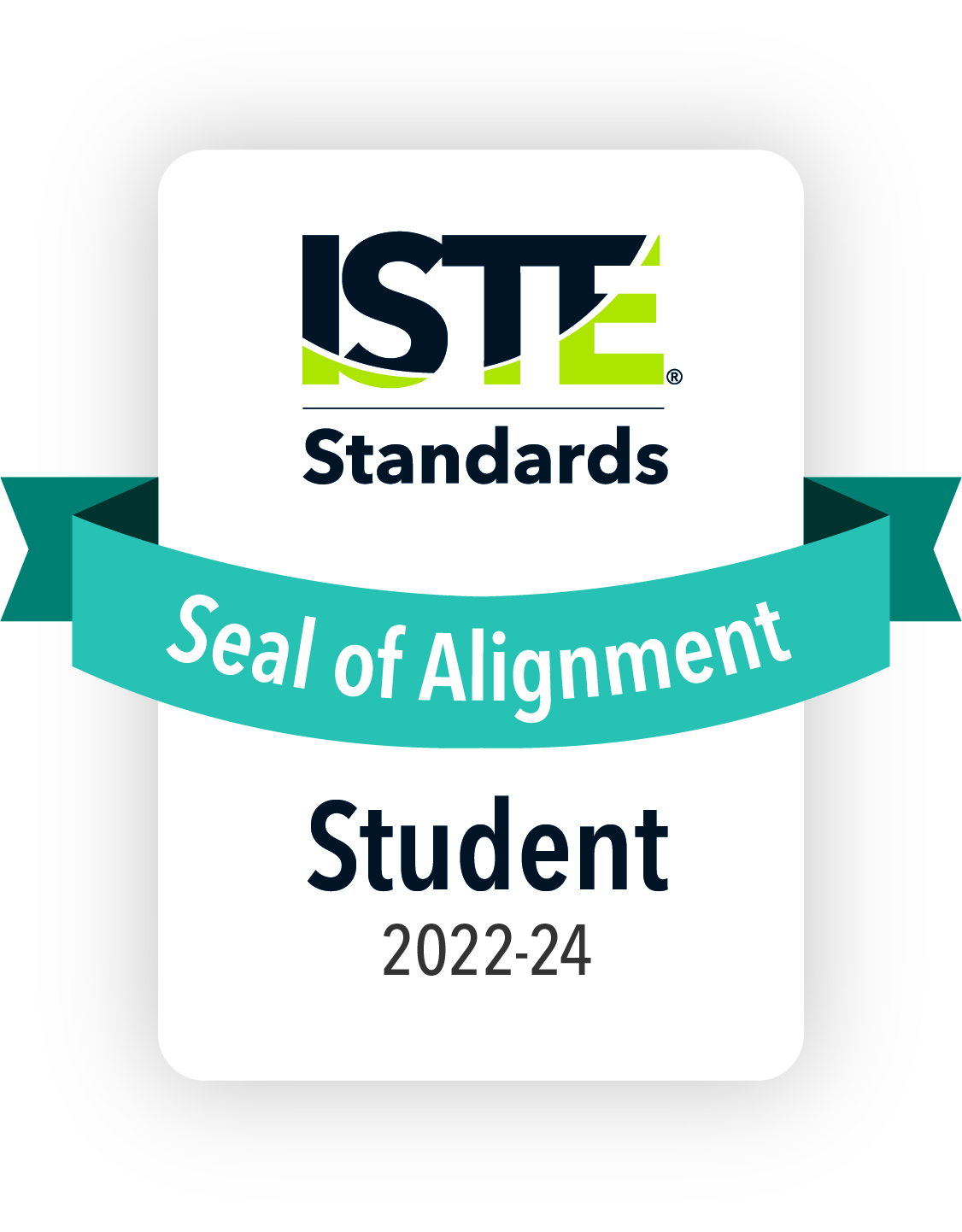If you’ve been doing your research on technology curriculum for K-12 students, you’ve probably run into the term “ISTE Standards,” or even seen the ISTE Seal of Alignment on some resources and solutions. But what, exactly, are ISTE Standards and what do they mean for educational institutions?
In this article, we discuss the definition of ISTE Standards and how they can help schools align their tools with these important standards – as well as how educators and leaders may heed these standards for an optimal technology learning environment for students.
What Are ISTE Standards?
ISTE standards are standards set by the International Society for Technology in Education (ISTE) to guide the best practices for using and teaching technology in learning environments. These standards are broken into categories that support different individuals, from detailing the standards set for student-facing curriculum to standards that teachers and educational leaders can apply to support the implementation of these standards in their institutions.
The ISTE standards have been used for over 20 years and are updated regularly to reflect the most current technology, practices and definitions. These standards have been adopted in all 50 states of the U.S., as well as many countries throughout the world.
Below is a brief introduction to each of the categories of ISTE Standards:
ISTE Standards for Students
The ISTE Standards for students describe the skills and knowledge students need to thrive, grow and contribute in an increasingly digital society. These standards include learning how to be responsible and safe online, understanding and employing computational thinking, effectively curating and evaluating knowledge attained digitally, and using digital tools to successfully communicate with others.
ISTE Standards for Educators
The educator section of the ISTE Standards defines the knowledge and insights educators need to successfully support students in the achievement of the ISTE Standards for students. This includes designing, facilitating and analyzing activities and environments that leverage technology to improve student learning.
ISTE Standards for Education Leaders
In the education leaders section of the ISTE Standards, there is a detailed framework for supporting the implementation of ISTE Standards for students and educators. The goal for these leaders should be to create rich learning environments while leading the knowledge and behaviors required to make this learning possible.
ISTE Standards for Coaches
There are several different types of technology coaches who can help support and drive the standards of technology in learning. In the ISTE Standards for Coaching section, these standards detail the different ways in which these coaches can help to support these initiatives. For instance, “Learning Designer” coaches can help educators design learning experiences and environments that provide authentic, active and personalized learning experiences.
ISTE Standards for Computational Thinking
The ISTE Standards for Computational Thinking are specifically designed to help educators integrate computational thinking into their curriculum. Computational thinking is an important tool not only for successfully using technology, but also for innovating and solving problems. These standards detail the best framework for designing and integrating computational thinking in the classroom in a collaborative and equitable way.
What Does ISTE Stand For?
ISTE stands for the International Society for Technology in Education. This is a nonprofit organization founded in 1979 to support teachers and leaders in the use of technology in education.
Learn more about ISTE and its mission here: https://www.iste.org/about/about-iste
About ISTE Seals of Alignment
Technology programs that have undergone rigorous scrutiny and evaluation by ISTE reviewers may receive the ISTE Seal of Alignment. This evaluation is based on the program’s pedagogical powers as well as the extent to which the skills built into the curriculum embody the ISTE standards. If the program passes this rigorous examination, it may earn an ISTE Standards Seal of Alignment, which represents the gold standard for successfully implementing digital learning.
For more information about how Learning.com’s programs align with ISTE standards, please review our article here or speak with a Learning.com expert today!


Learning.com Team
Staff Writers
Founded in 1999, Learning.com provides educators with solutions to prepare their students with critical digital skills. Our web-based curriculum for grades K-12 engages students as they learn keyboarding, online safety, applied productivity tools, computational thinking, coding and more.
Further Reading
Understanding Abstraction: Everyday Examples and The Role of Abstraction in Computational Thinking
Abstraction is an essential concept in computational thinking and problem solving, but it’s often one of the more challenging aspects to grasp. This...
7 Examples of Algorithms in Everyday Life for Students
For students new to coding, the process of algorithmic thinking can be challenging. Instead of providing an answer to a question—or even showing the...
Teaching Students to Identify Cyberbullying: A Guide for K-12 Educators
In today’s interconnected world, technology is becoming an increasingly integral part of children’s lives, offering countless opportunities for...




